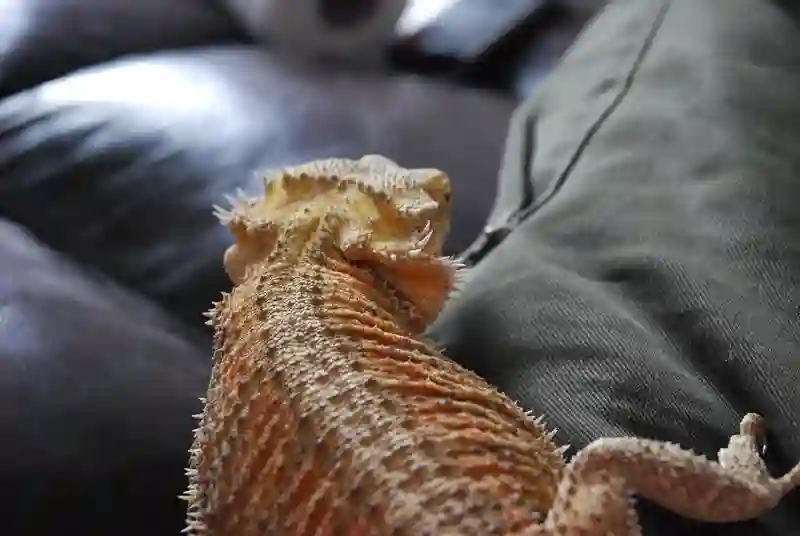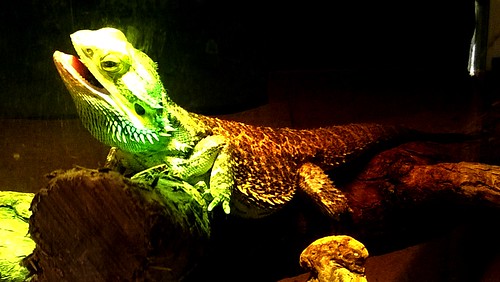During winter, your Bearded dragon might not eat due to brumation. During this season, it is common for bearded dragons to stop eating, which can be concerning for both owners and experts in reptile health.
Winter is the season when bearded dragons go through a period of dormancy known as brumation. During brumation, they enter a deep sleep, their metabolism slows down, and their food intake reduces to conserve energy and remain sheltered during the cold months.
In this article, we will discuss three things that you can try to get your bearded dragon to eat during the winter. As a professional reptile health expert, I urge you to continue reading to learn more about how to take care of your beardie’s health during the winter.
Three Things You Can Try
If you find that your bearded dragon is not eating as much as they usually do during the colder months of the year, there are several things you can try before resorting to more drastic measures like visiting a veterinarian or force-feeding them. Firstly, adjusting your pet’s temperature and lighting setup should be considered.
This can help to keep your bearded dragon’s appetite up and encourage them to eat. Secondly, changing up their diet can also help to stimulate their appetite.
Providing extra hydration is another way of ensuring that your bearded dragon remains healthy and happy through the winter months. In the following sections, we will go into more detail about each of these three things you can try if your bearded dragon is not eating during winter and how they can help to support their well-being.
Adjust the Temperature and Lighting
Bearded dragons are ectothermic, which means they rely on their environment to regulate their body temperature. If the temperature in their enclosure is too cold, they will become lethargic and may even stop eating altogether.
It’s important to make sure that your bearded dragon’s enclosure has a basking spot that reaches a temperature of around 100 degrees Fahrenheit. This will allow them to properly digest their food and maintain their energy levels.
In addition to providing a warm basking spot, you should also make sure that your bearded dragon has access to UVB lighting. UVB lighting is essential for bearded dragons because it helps them produce vitamin D3, which is needed for proper bone health and digestion.
Without enough UVB lighting, your bearded dragon may become weak and lose its appetite. If you’re having trouble maintaining the proper temperature or providing enough UVB lighting in your bearded dragon’s enclosure, there are several things you can try.
For example, you could add a basking lamp or heat mat to provide extra warmth or invest in a high-quality UVB bulb that emits enough light for your bearded dragon’s needs. Additionally, you should monitor the temperature and lighting regularly to ensure that they remain consistent and effective.
The Importance of Proper Temperature
The ideal temperature range for a bearded dragon is between 85-100 degrees Fahrenheit during the day with a drop at night down no lower than 60 degrees Fahrenheit.
Be careful not to lower the temperature too much as this can cause them problems digesting food properly leading them to lose interest in eating altogether.
When temperatures are not warm enough it will cause lethargy which results in low activity levels; resulting in less calories burned by your beardie which can lead them into fat storage mode making it harder for them to recover from any illness.
Proper UVB Lighting
Bearded dragons require UVB lighting to properly digest their food and maintain good health. Without adequate lighting, they may suffer from metabolic bone disease or develop problems with their digestive system.
It’s important to provide the correct amount of UVB lighting for your bearded dragon’s size and needs. UVB light should be provided for about 10-12 hours a day and it should be replaced every 6-12 months because the output will diminish over time.
Make sure you purchase a bulb that is labeled specifically for reptiles so that it has the proper wave length of light needed. Taking care to regulate temperature and providing proper UVB lighting are essential components of successfully caring for your bearded dragon during winter when they may not want to eat as much or even at all.
Change Their Diet
One of the most common reasons why bearded dragons refuse to eat during winter is due to boredom with their regular diet. Without variation in their diet, they can become picky and refuse food altogether.
As a responsible pet owner, it’s essential to keep your bearded dragon’s diet interesting and exciting. The first thing you should consider when changing your bearded dragon’s diet is the type of insects or vegetables you offer them.
Be sure to research which types of insects are safe for them to consume before introducing anything new into their diet. Some great options include crickets, roaches, mealworms, and waxworms.
These insects are all high in protein and easy for your bearded dragon to digest. Vegetables are also an essential part of a bearded dragon’s diet.
Leafy greens like kale, collard greens, and dandelion greens can provide them with much-needed vitamins and minerals that they may not get from eating just insects alone. Additionally, it is always better to feed organic vegetables as pesticides and herbicides can cause health problems in the long run.
When changing up your pet’s diet, it is important only to introduce one type of food at a time so that you can monitor its impact on their health closely. As with any dietary change, give them time to adjust before making any further changes.
Provide Extra Hydration
Dehydration and loss of appetite
Bearded dragons need access to clean water at all times. If they become dehydrated, it can lead to a loss of appetite and other health problems.
During winter, when humidity is low, it’s important to provide extra hydration for your bearded dragon. You can tell if your bearded dragon is dehydrated by observing their skin – if it’s wrinkled or dry, they may need more water.
Tips on providing extra hydration
There are several ways you can provide extra hydration for your bearded dragon during winter. One way is misting their enclosure with water, which will increase the humidity levels in their environment and help them stay hydrated.
Another option is offering water through a dropper – this works well if your bearded dragon isn’t drinking from the water dish. To do this, simply fill a dropper with water and gently squirt it near their mouth so that they can drink from it.
It’s important not to over-hydrate your bearded dragon as this can lead to health problems such as diarrhea. When providing extra hydration, make sure you’re not overdoing it and monitor their behavior closely.
Conclusion
If your bearded dragon is not eating during winter, there are several things you can try to help stimulate their appetite. Adjusting the temperature and lighting in their enclosure can help create a comfortable environment for them that encourages eating.
Changing up their diet and introducing new foods can also keep them interested in eating. Additionally, providing extra hydration through misting or offering water through a dropper is crucial for maintaining good health during the dry winter months.
Pay attention to subtle changes in behavior or appearance which could indicate dehydration so you know when these tactics are necessary. With patience and persistence, you can help your bearded dragon maintain a healthy appetite and enjoy their meals throughout the winter season.



Leave a Reply